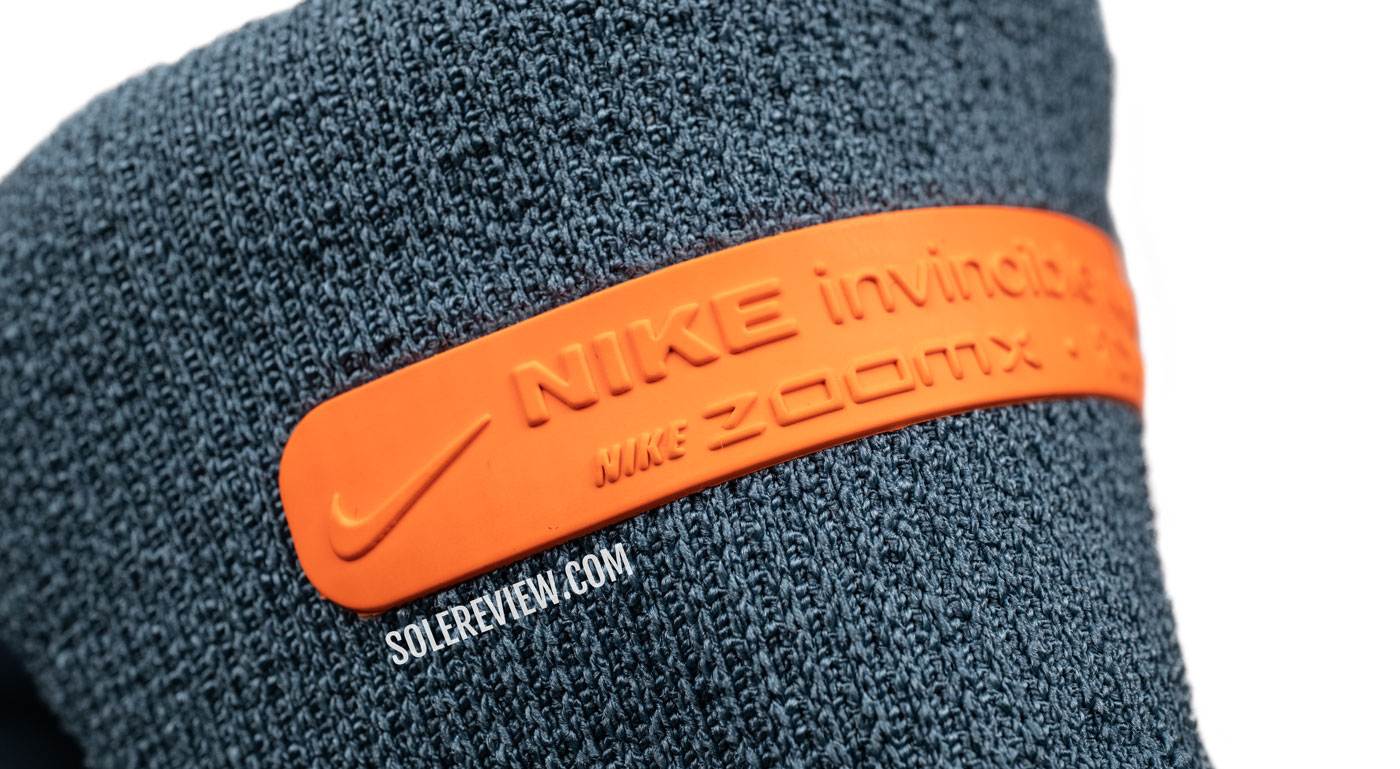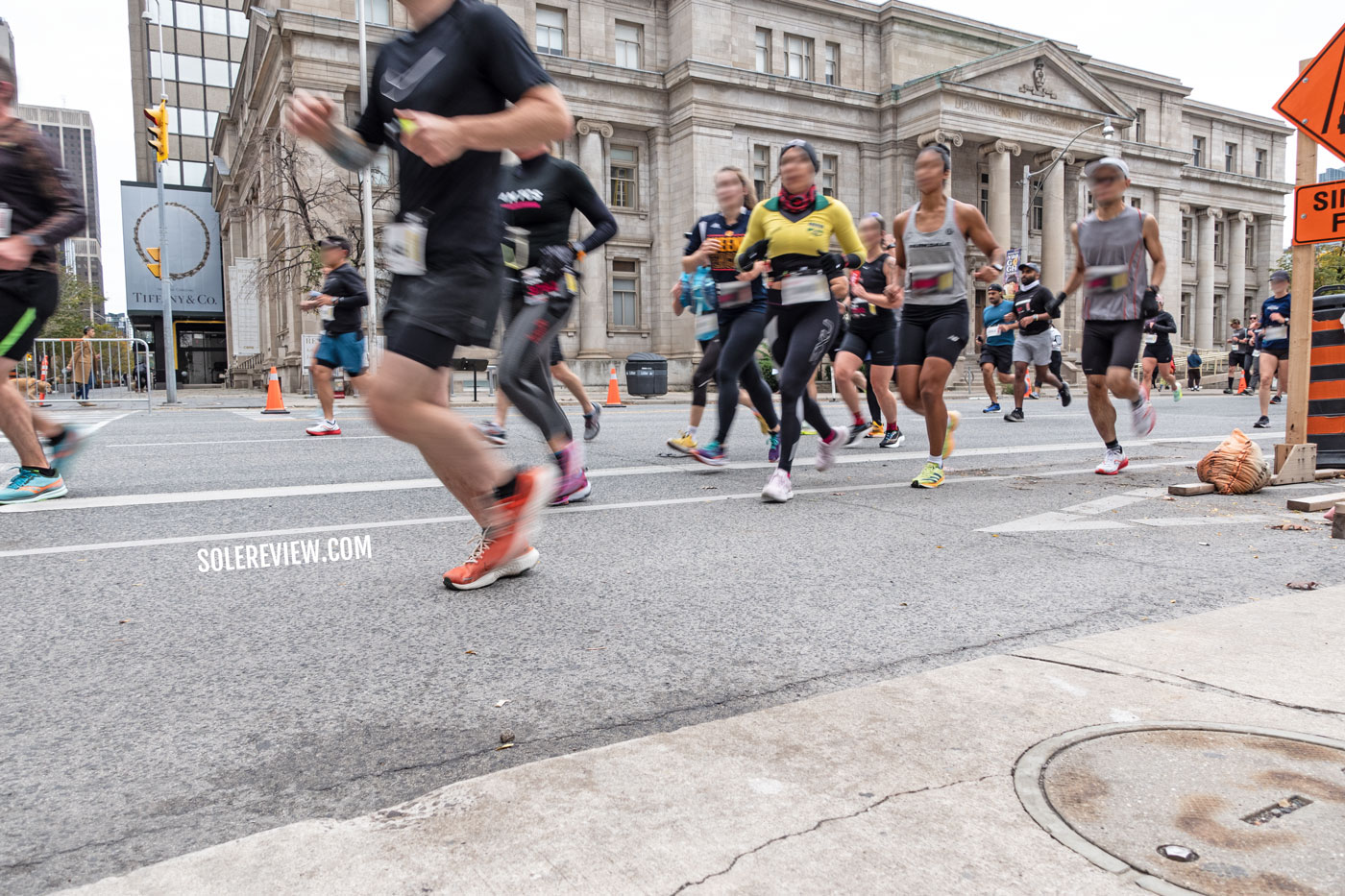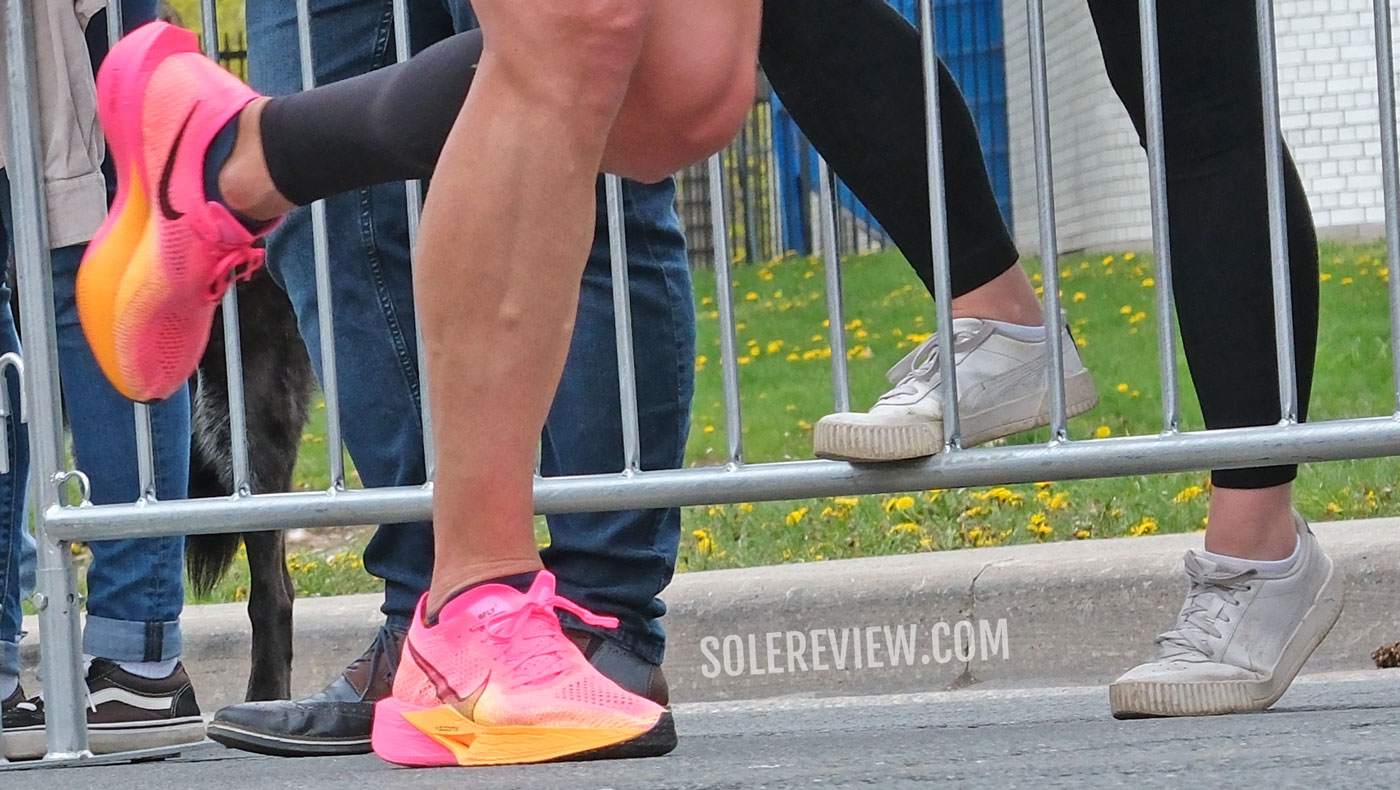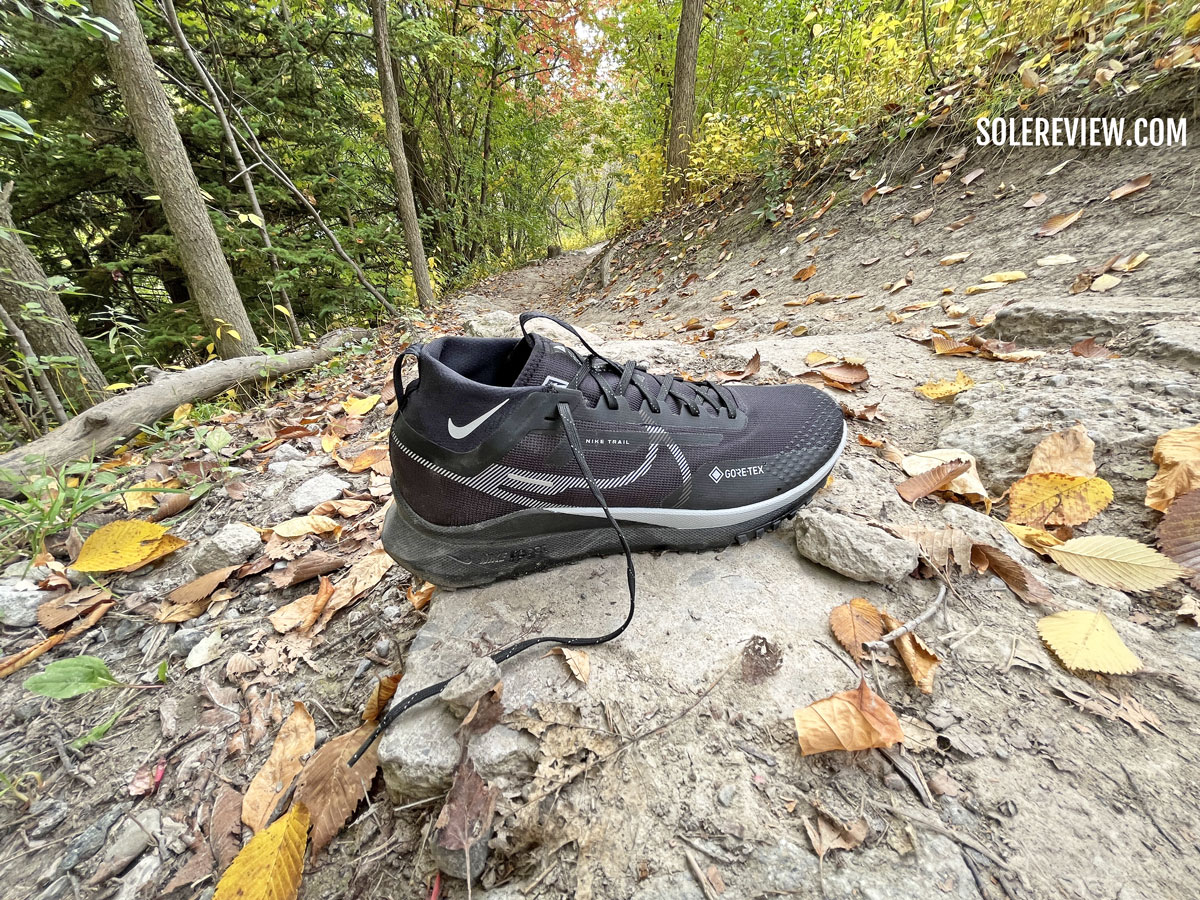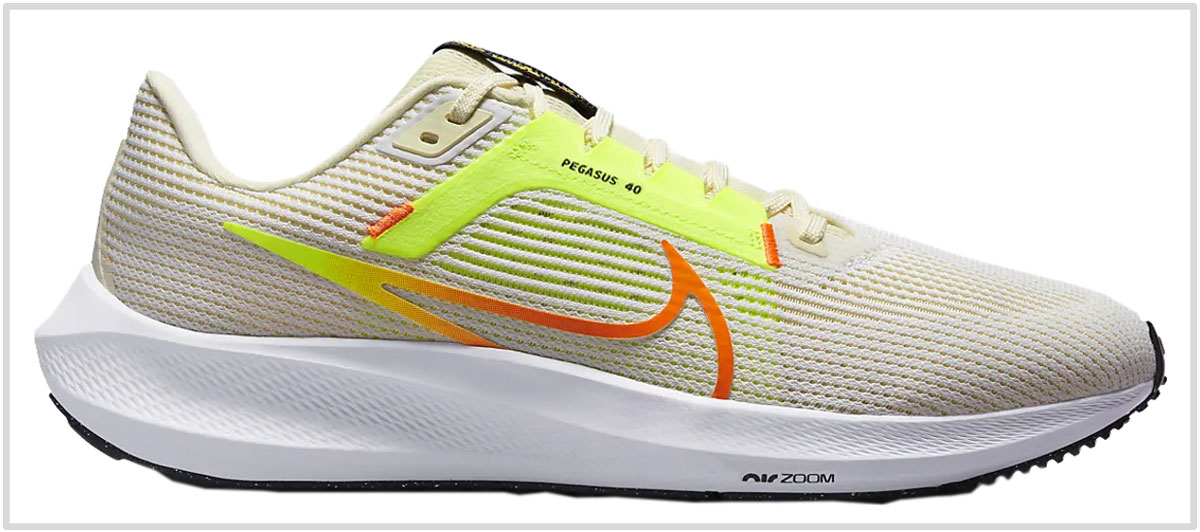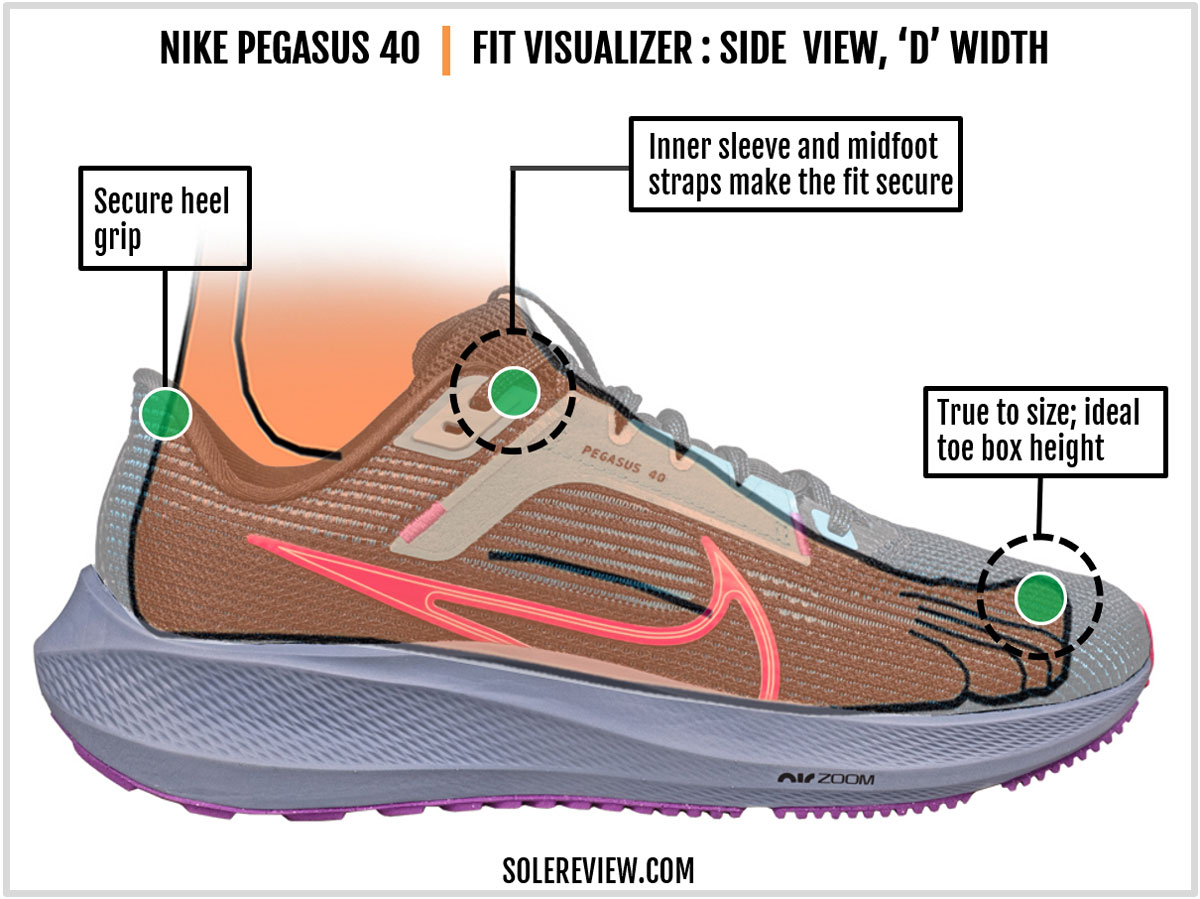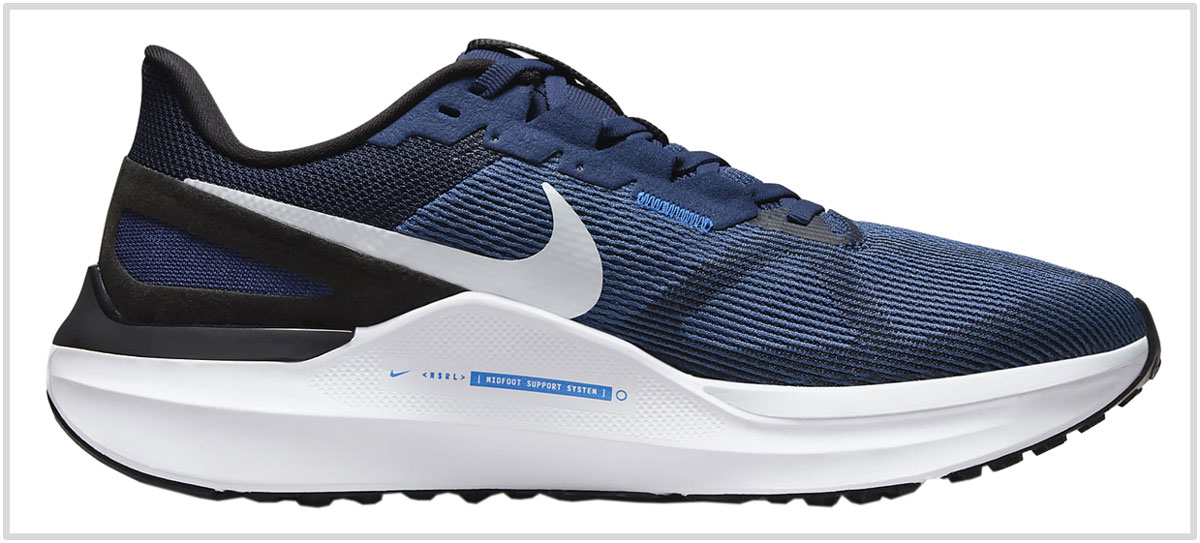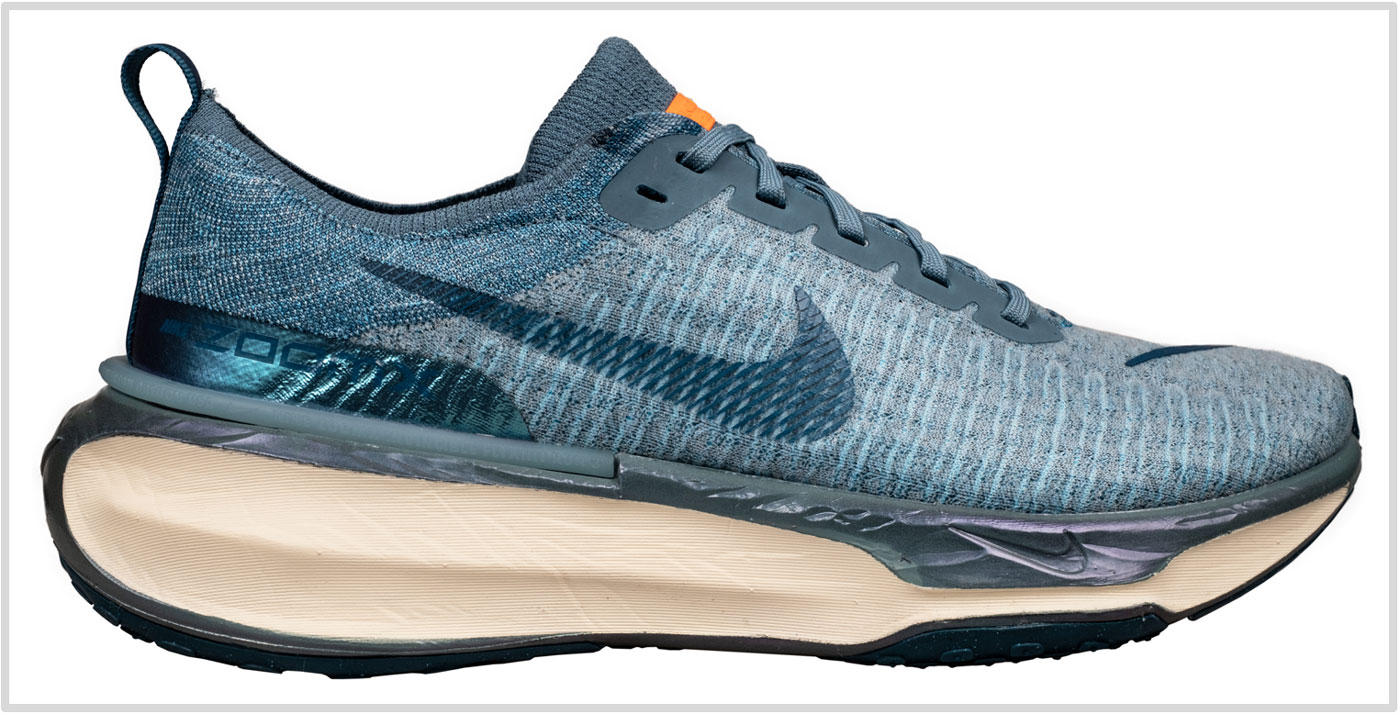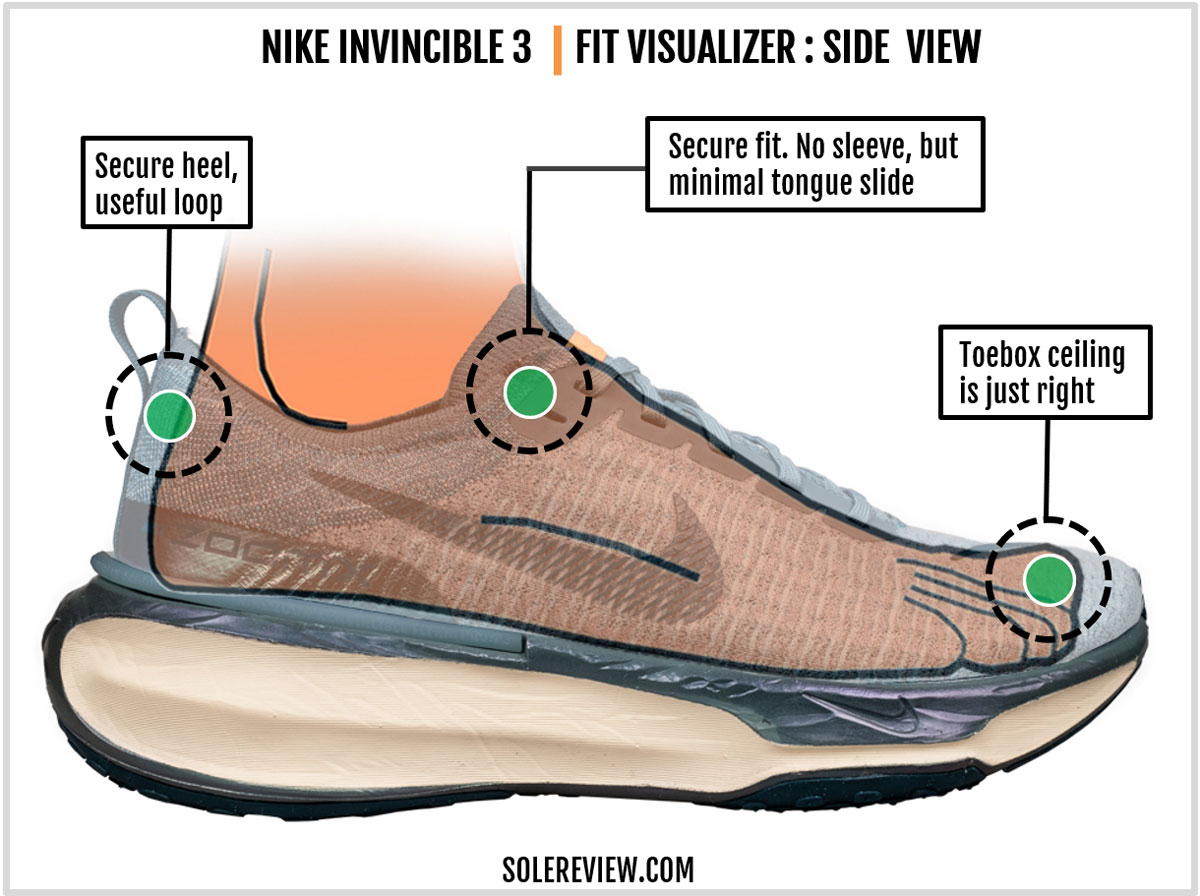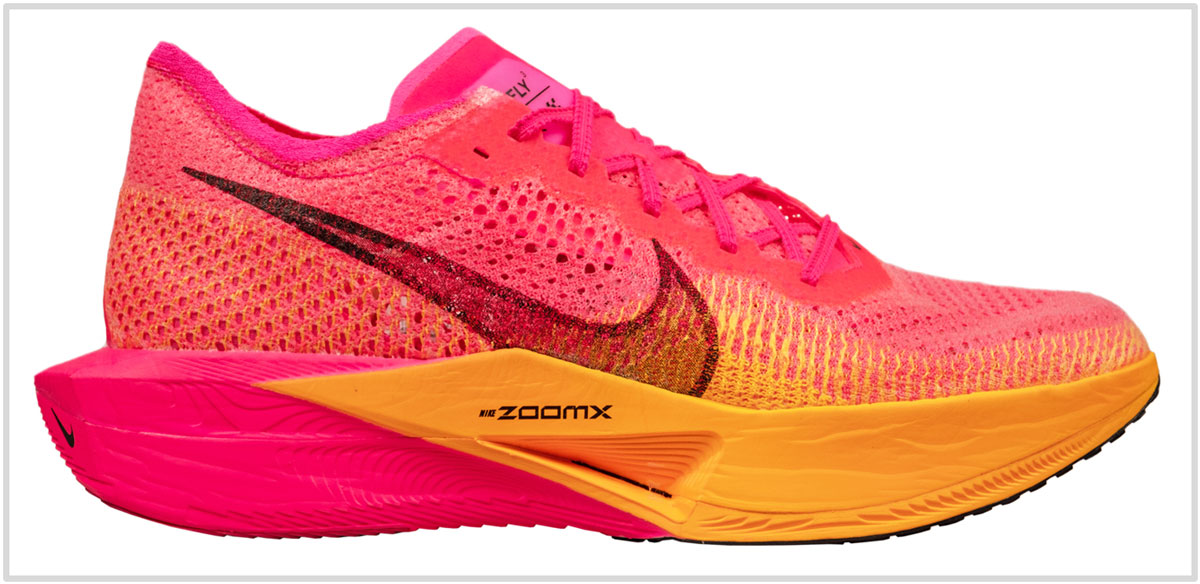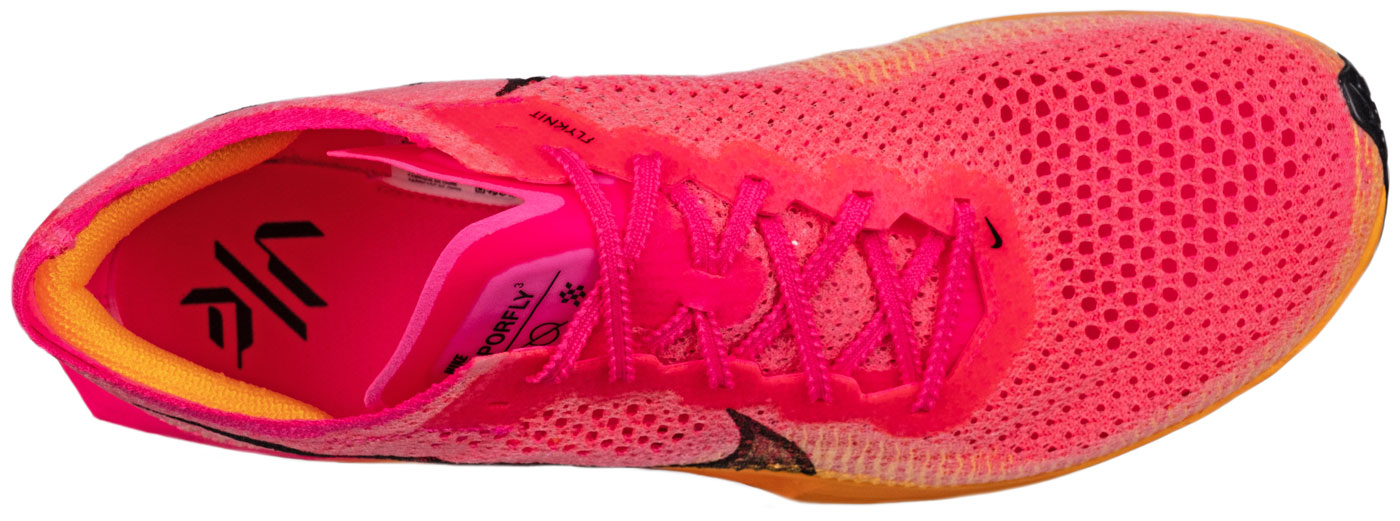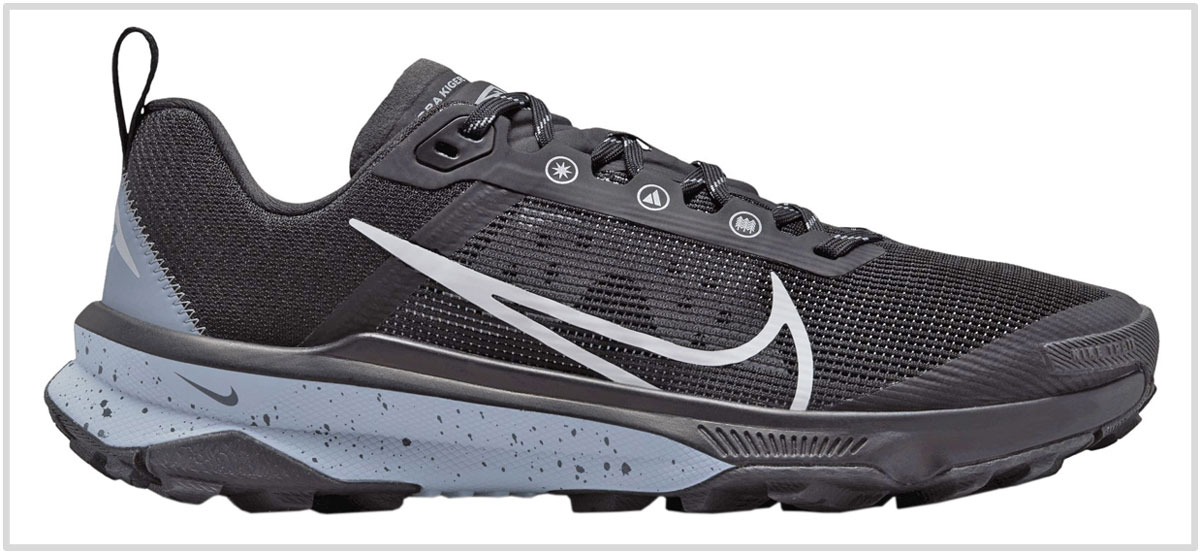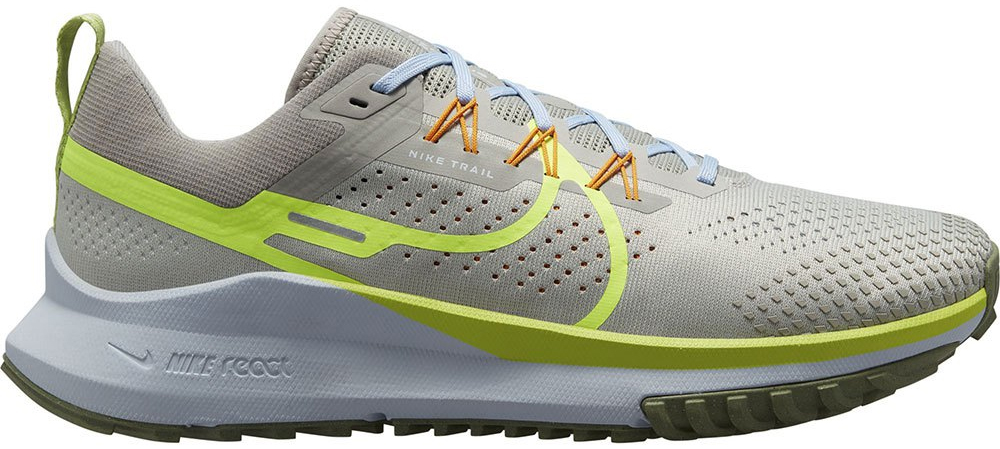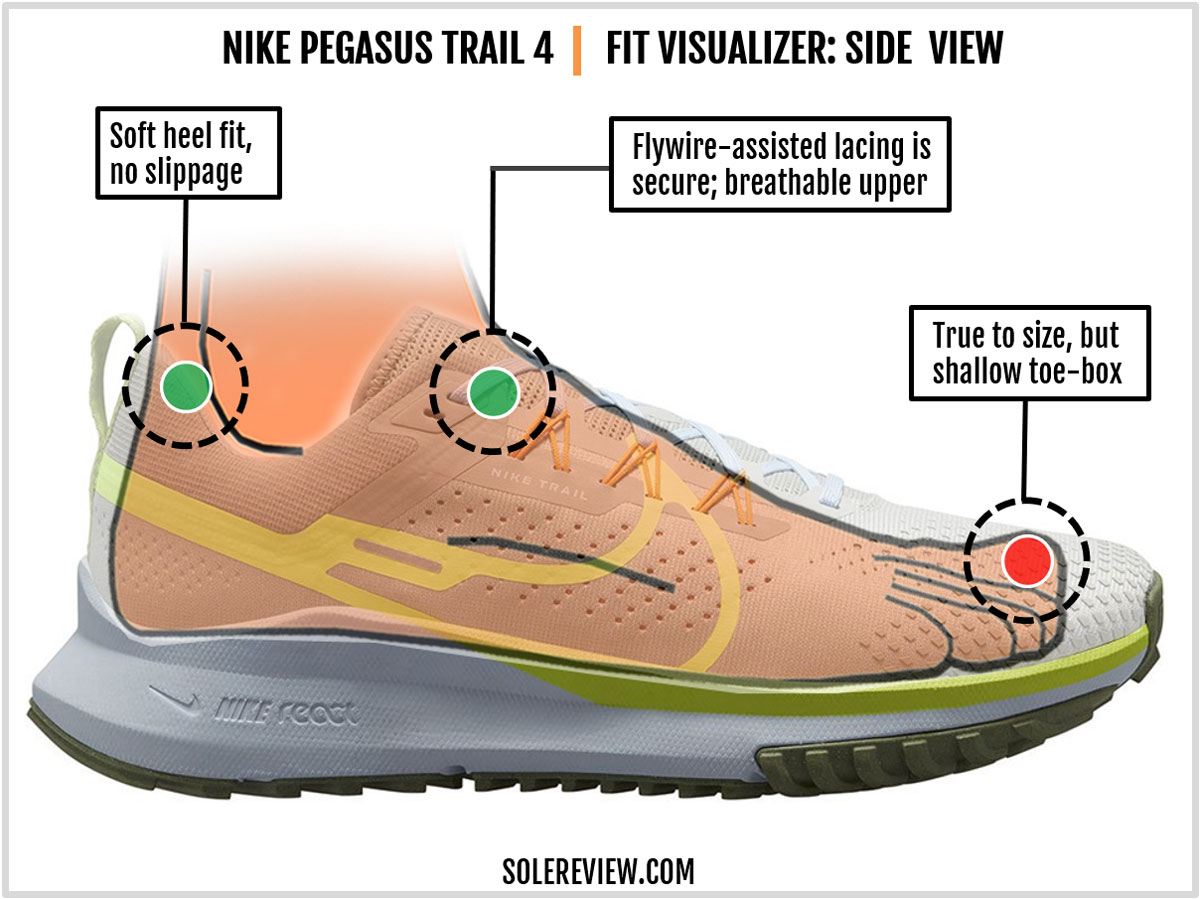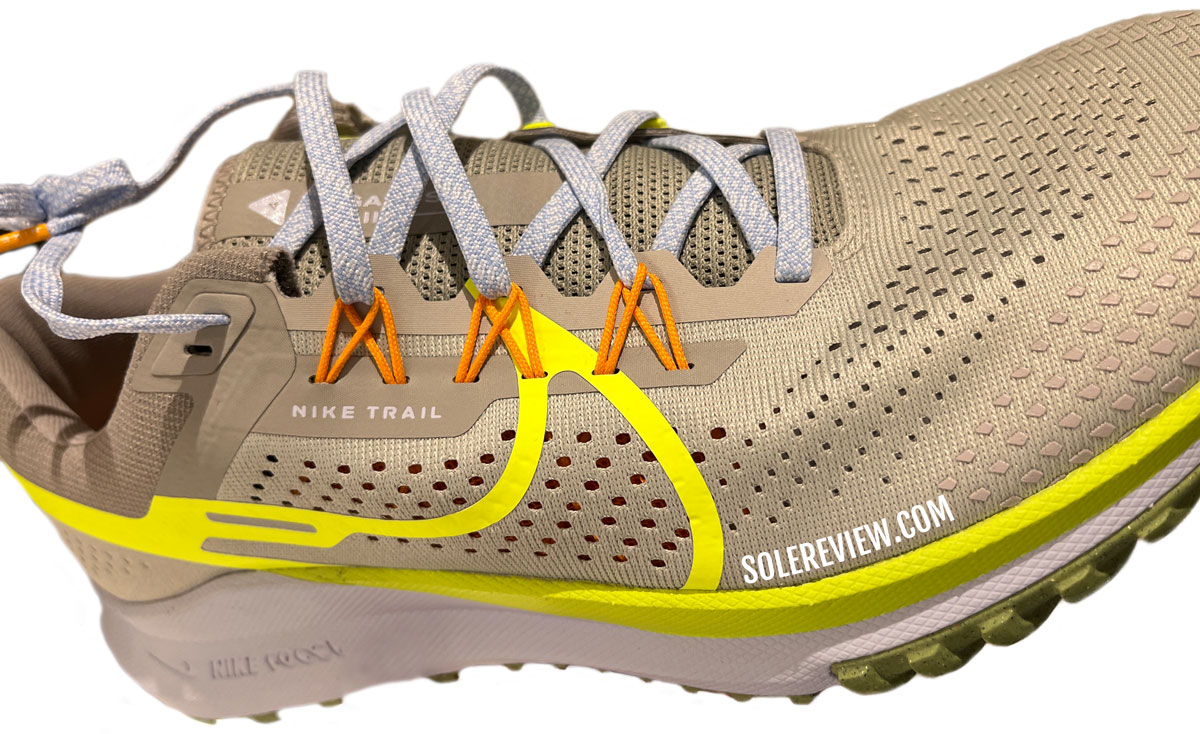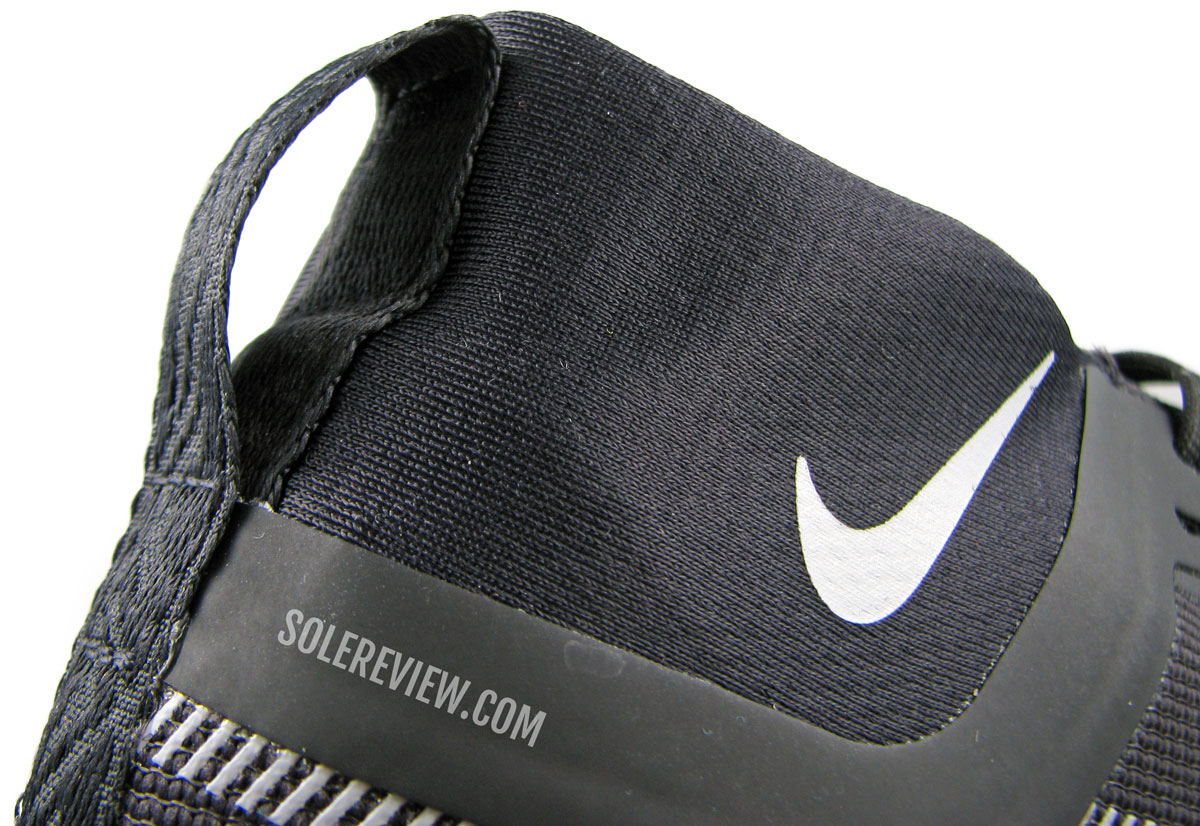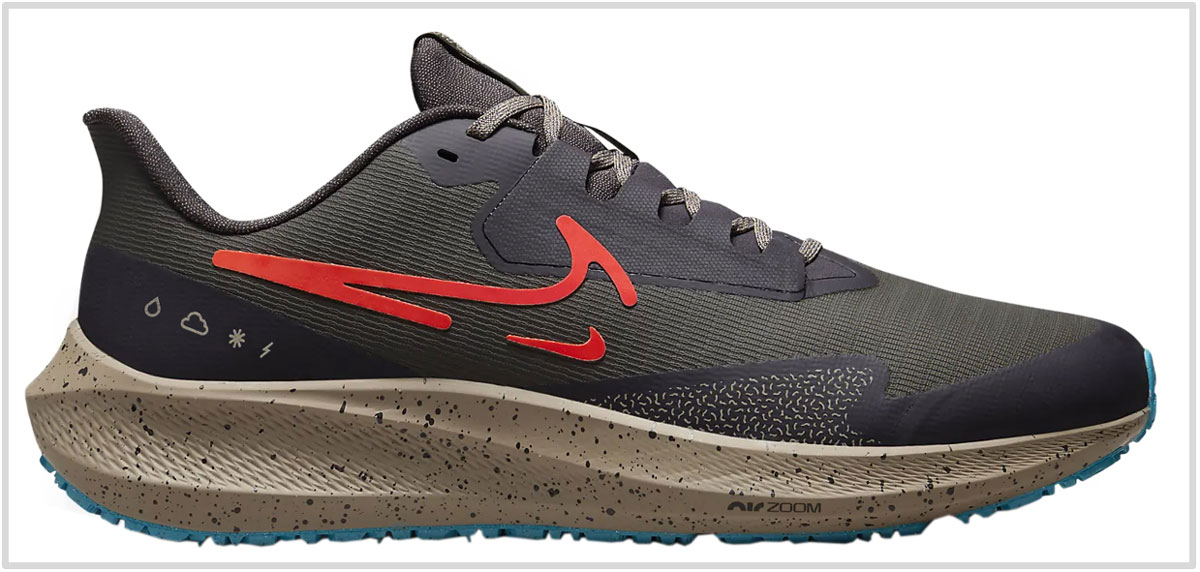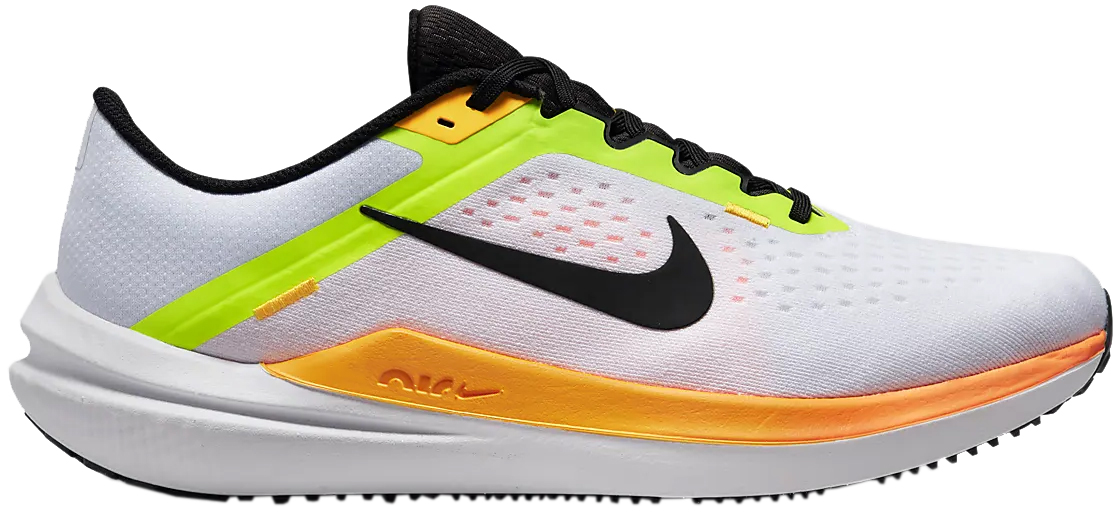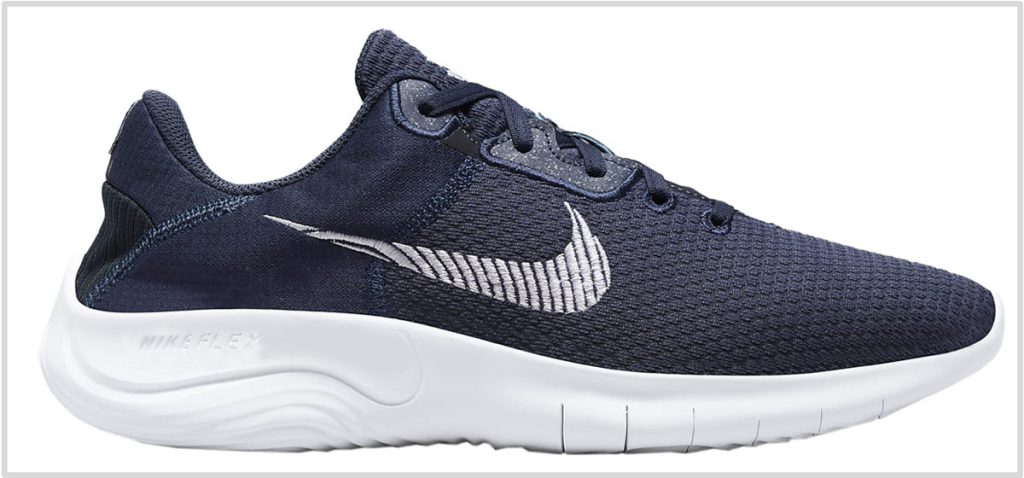This article has been updated with current models for November 2023. The Structure 24, Vaporfly 2, and Terra Kiger 8 have been replaced with their updated versions. We have not tested the Vomero 17 and Infinity 4 yet, thus their exclusion.
In this product guide:
- 1. Factors to consider
- 2. Best everyday trainer: Nike Pegasus 40
- 3. Best stability trainer: Nike Structure 25
- 4. Best long-distance cruiser: Nike Invincible 3
- 5. Best marathon racer: Nike Vaporfly 3
- 6. Best trail running shoe: Nike Terra Kiger 9
- 7. Best road-trail hybrid: Nike React Pegasus Trail 4
- 8. Best winter running shoe: Nike Pegasus 39 Shield
- 9. Best affordable daily trainer: Nike Winflo 10
- 10. Best running shoe for gym: Nike Flex Experience 11
Some Nike running shoes – like the Pegasus 40 – come very close to being the one shoe to do it all.
However, it’s very difficult to recommend which Nike shoe is the ‘best’ overall without context. For example, a Nike running shoe that’s an excellent everyday trainer could be a mediocre marathon racer. Similarly, a trail shoe will feel out of its element when used as a road trainer.
So it makes sense to recommend Nike running shoes based on their use cases, which are as follows:
EVERYDAY TRAINERS
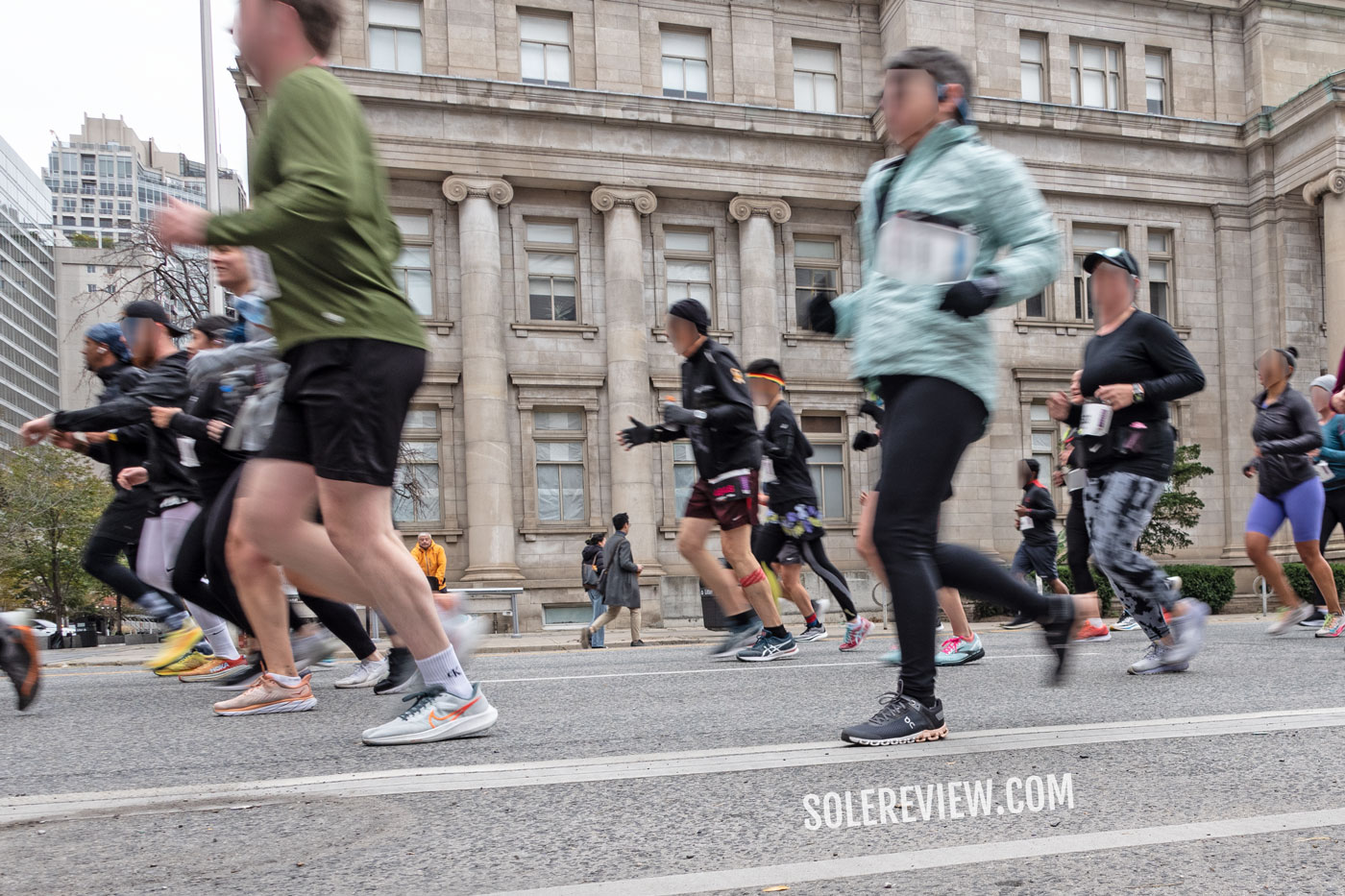
From everyday runs to a half-marathon – the Nike Pegasus can do it all. The 40 shares the same sole with the 39.
These running shoes are extremely versatile, since they work equally well across different speeds and distances. While these shoes are not exactly what one would call tempo trainers, they don’t feel mushy either.
Usually, there’s ample cushioning comfort for up to half-marathon distances. Popular Nike models like the Pegasus 40 and Structure 24 are good examples.
In this category, our top pick is the Nike Pegasus 40.
LONG-DISTANCE CRUISER
Most running shoe brands have a comfortable cruiser that prioritizes ride comfort over everything else. For New Balance, it’s the Fresh Foam 1080V13. The Saucony Triumph 21 is also excellent.
For Nike, that shoe is the Nike Invincible 3 – a plush running shoe that never seems to run out of ride comfort.
(Related read: The most comfortable running shoes)
MARATHON RACER
Nike upended the marathon shoe landscape with the Vaporfly a few years ago, and it’s never been the same since. The Nike Vaporfly 3 continues to be a crowd favorite.
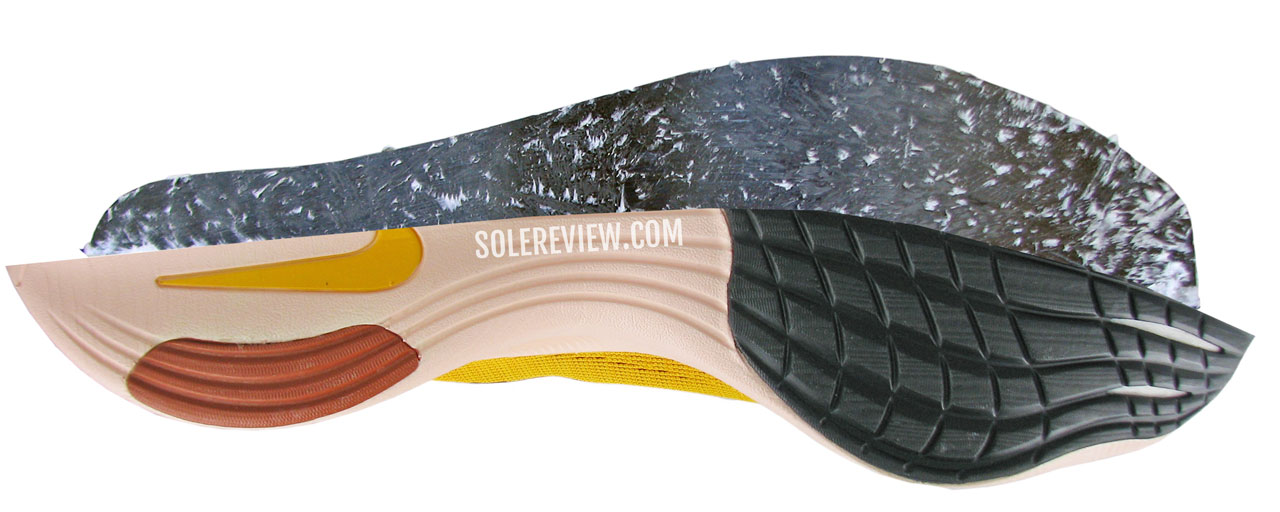
This simulated image gives us a pretty good idea of the Carbon plate’s position inside the ZoomX midsole.
That doesn’t come as a surprise. The PEBA foam midsole and Carbon plate produce a soft, bouncy, and speed-friendly ride in a lightweight package.
(Related read: The best marathon shoes)
TRAIL RUNNING SHOES
Nike’s trail running assortment has grown stronger over the last few years, but two models stand out from the rest. The first shoe is the Nike React Pegasus Trail 4 – a comfortable trainer that works equally well on the road and trail.
The second shoe is the Nike Terra Kiger 9 – a serious trail shoe that blends ride comfort with speed-friendly features. For the sake of brevity, we’ve left the Zegama and Wildhorse out.
(Related read: The best trail running shoes)
OTHER CATEGORIES
Some Nike running shoes work better for specific purposes. The Pegasus 39 Shield’s weather-resistant upper and grippy outsole makes it a great winter running shoe. On the other hand, the Flex Experience 12’s flexible midsole makes it ideal for gym workouts.
And if you don’t want to spend Pegasus 40 money, the less expensive Winflo 10 is a versatile everyday workhorse.
1) Best everyday trainer: Nike Pegasus 40
Summary: A versatile neutral trainer for everyday runs. The two Zoom Air bags and React midsole make the Pegasus comfortable enough even for half-marathon distances.
The snap from the Zoom Air bags also makes the Pegasus 40 good for tempo runs. The beveled outsole design helps with the landings and forefoot/midfoot striking.
How it fits:
The Pegasus 40 fits true to size; the inner sleeve and midfoot straps make the fit smooth and secure. The heel grip is excellent, and an optional 4E (extra wide) is available for wide feet.
What’s new? The ride quality is the same, as the midsole hasn’t changed. The Pegasus 40 fits better than the Pegasus 39 due to the strap-based midfoot lacing.
Ideal running speeds: 4:30 min/km (7:00 min/mile) and slower.
Pros: Versatile ride character, comfortable and secure upper, optional widths, outsole grip.
Cons: Lack of reflective elements, the tongue flap could be wider.
Similar shoes: Asics Cumulus 25, Brooks Ghost 15, New Balance 880V13, Saucony Ride 16.
The Pegasus 40 is nearly identical to the Pegasus 39 – our review explains the differences in detail.
2) Best stability trainer: Nike Structure 25
Summary: The Structure 25 is a supportive daily trainer with a wide midsole base and secure upper. While the Structure no longer has a medial post (as it did in the past), its EVA midsole offers decent levels of support.
Only the forefoot has a Zoom Air bag, whereas the heel is made of EVA foam for stability. This is a capable daily trainer that works across a wide range of use cases. It feels long in the tooth, as this is an oft-repeated Nike formula that has been done to death.
How it fits: Snug, plush, and true to size. The upper is sleeved with a generous amount of tongue and heel padding. The strap-based lacing makes it easy to achieve a secure fit.
What’s new? Everything’s new, yet familiar. The midsole gets new raised sidewalls with a plastic heel clip. This is a design trend that most stability shoes are following, and Nike is a late adopter.
Ideal running speeds: 4:30 min/km (7:00 min/mile) and slower.
Pros: Supportive ride character, comfortable and secure upper, optional widths, outsole grip.
Cons: Lack of reflective elements, the upper isn’t very breathable. Dated design.
Similar shoes: Asics GT-2000 12, Brooks Adrenaline GTS 23, New Balance 860V13, Saucony Guide 16.
3) Best long-distance cruiser: Nike Invincible 3
Summary: An uber-cushioned trainer that’s ideal for high-mileage cruising at relaxed speeds.
The lightweight ZoomX foam midsole never seems to run out of cushioning, so use the Invincible 3 as a recovery shoe. It even works as a comfortable shoe for 4:00+ marathons.
Upper fit:
A true-to-size fit with a smooth midfoot and spacious toe-box. The heel collar is soft and grips well. Unlike the Invincible 2, the Invincible 3’s tongue isn’t sleeved.
What’s new? The midsole is firmer because of the newly added lasting cloth and more supportive sidewall design. Our review has all the details.
Ideal running speeds: 5:30 min/km (8:50 min/mile) and slower.
Pros: Soft and springy ride, accommodating upper fit, reflective accents.
Cons: Not very versatile; the soft ride is a limiting factor during high-speed runs.
Similar shoes: Asics Nimbus 25, Hoka Bondi 8, New Balance 1080V13, Saucony Triumph 21.
4) Best marathon racer: Nike Vaporfly 3
Summary: The Vaporfly was the original PEBAX-Plate marathon racer in the market, but the rest of the competition has caught up, and then some. It’s still an excellent shoe, but so are the others.
The Nike Vaporfly 3 combines a soft and responsive ZoomX midsole with a Carbon fiber plate. The result is a comfortable ride character that doesn’t sacrifice speed. Our full review is here.
Upper fit:
A true-to-size interior with a slim racer fit. The mesh shell is extremely breathable; optional widths are not available. The new upper is noticeably more spacious than the Vaporfly 2, so the power delivery to the midsole is weaker.
Ideal running speeds: Between 3:00 min/km (5:00 min/mile) to 5:30 min/km (8:50 min/mile).
Pros: Lightweight and comfortable midsole that promotes high-speed runs and transitions, secure fit, breathability.
Cons: Low heel stability, price, lack of additional widths, no reflectivity like the V2, weaker lockdown due to looser upper, average durability.
Similar shoes: Saucony Endorphin Pro 3, Saucony Endorphin Speed 3, New Balance SC Elite V3.
5) Best trail running shoe: Nike Terra Kiger 9
Summary: A low-profile (and low heel drop) trail running shoe with sufficient comfort and protection for most trail runs. A full-length React midsole adds the necessary cushioning.
The low-to-ground midsole promotes proprioception, so the Terra Kiger 9 performs well during speed trail runs.
Upper fit:
Secure, breathable, and true-to-size fit. The speed lacing loops help lock the midfoot in. The toe bumper is reinforced with a fused layer and outsole rubber for durability.
What’s new? The forefoot Zoom Air bag has been removed, so the softer midsole is made entirely of React foam. The upper is new, yet retains the outdoor-oriented design and fit characteristics from the Terra Kiger 8.
Ideal running surface: Technical trails, gravel paths.
Pros: A cushioned ride that also works well during quick trail runs, ground feedback, breathable and secure upper.
Cons: The outsole lugs could be longer and have wider spacing to minimize clogging.
Similar shoes: Saucony Peregrine 13, Nike ZoomX Zegama.
6) Best road-trail hybrid: Nike Pegasus Trail 4
Summary: The Nike Pegasus Trail 4 feels at home on the road as well as on mild-gradient trails. This is a running shoe with a soft ride, so the low levels of stability limit its technical trail capabilities.
But if you’re looking for a dual-purpose shoe with limited off-road capabilities, the Pegasus Trail 4 makes a compelling case for itself. Read our in-depth review.
Upper fit:
The regular and Gore-Tex versions fit differently. The standard Pegasus Trail 4 has a true-to-size (but barely) fit with an excellent midfoot fit and shallow toe box. You need to buy a half-size larger on the GTX upper, and the non-Flywire midfoot fit is sloppy.
The GTX upper had a heel gaiter, a feature that the non-waterproof model lacks.
What’s new?
The Pegasus Trail 4 is softer than the Pegasus Trail 3, and uses a thinner outsole. What the V4 gains in ride comfort, it loses in ride stability and protection.
Ideal running surface: Flat or mild-grade trails, gravel paths, roads.
Pros: Ride comfort, midfoot fit (on the Flywire upper), heel gaiter (on GTX version).
Cons: React foam stiffens in freezing temperatures, has no gaiter attachment D-ring, low outsole durability.
Similar shoes: New Balance Hierro V7, Hoka Challenger 7, Salomon Ultraglide.
7) Best for winter running: The Nike Pegasus 39 Shield
Summary: The Pegasus 39 Shield is the winterized version of the Pegasus. Except for the React foam and Zoom Air midsole, nothing else is shared with the standard model. We haven’t heard any news about the Pegasus 40 Shield yet, so we’re assuming that the 39 Shield will carry forward to the next year.
A water-resistant and insulated upper keeps the feet dry and warm during the colder months. The outsole also uses a special ‘Storm-tread’ rubber for grip on wet and slushy surfaces.
Upper fit:
The fit is accommodating and runs true to size. The lacing loops make the midfoot secure and easy to cinch; the insulated tongue and heel deliver a no-slippage fit. The layered upper is warm enough for cold-weather runs.
What’s new? A ride that is softer than the Pegasus 38 Shield, and improved reflectivity.
Optimal operating temperatures: -5 C (23F) to 10 C (50F).
Pros: Effective water resistance and insulation, outsole grip, ride comfort, reflectivity, accommodating fit.
Cons: React turns stiff in freezing temperatures, lack of widths.
Similar shoes: Saucony Peregrine ICE 3.
8) Affordable daily trainer: Nike Air Winflo 10
Summary: The Nike Winflo is a watered-down Pegasus of sorts.
Like the more expensive Pegasus 40, the Nike Winflo is a comfortable everyday trainer that uses an EVA foam midsole and Nike Air to deliver its cushioned ride.
However, its $100 retail price means that the Winflo sticks to the basics – the upper isn’t as plush, and the midsole lacks the nuanced cushioning of the Pegasus.
Upper fit:
The Winflo 10 has a true-to-size fit with a snug forefoot. Unlike the Pegasus, the Winflo doesn’t have an inner sleeve.
What’s new? A new midsole and Nike Air configuration. The redesigned upper has a similar fit.
Ideal running speeds: 4:30 min/km (7:00 min/mile) and slower.
Pros: Versatile daily trainer, secure upper fit, ride comfort, price.
Cons: Minor tongue slide, lack of widths and reflectivity.
Similar shoes: adidas Supernova 2, Brooks Trace 2.
9) Best running shoe for gym: Nike Flex Experience 11
Summary: The Flex Experience 11 is one of Nike’s most basic and affordable running shoes that is surprisingly versatile. It’s good enough for mild-intensity runs and casual use while being travel-friendly.
Its flexible forefoot and supportive heel make it an excellent gym shoe. The deep grooves under the forefoot are ideal for workouts like lunges and box jumps, whereas the heel is supportive enough for weight training. The low-profile EVA foam midsole works equally well on the treadmill.
Upper fit:
Narrow forefoot fit with a true-to-size profile. The narrow lacing width and padded heel deliver a secure grip. This is one of the few Nike running shoes with a collapsible heel – the upper doesn’t have a hard counter.
What’s new? The rear midsole loses the flex grooves from the Flex Experience 10, so the V11 is more supportive under the heel.
Ideal running speeds: 4:30 min/km (7:00 min/mile) and slower.
Pros: Flexible midsole, secure upper fit, collapsible upper heel, optional widths, price-value.
Cons: Average outsole grip.
Similar shoes: Nike Free RN 2018, Nike Free 5.0.
Do you own any of these shoes? Improve this review by sharing your insights – submit a review here.

